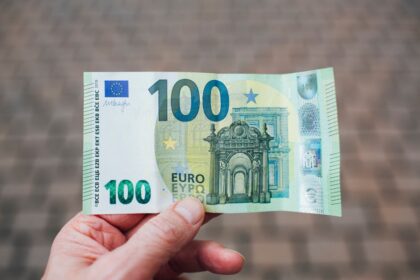E-commerce PPC: Boosting Sales with Targeted Ads is an indispensable strategy for businesses aiming to thrive in the competitive digital marketplace. Understanding its multifaceted nature, from foundational principles to advanced optimization techniques, is crucial for converting ad spend into tangible revenue growth. The unique demands of e-commerce — showcasing products, driving immediate purchases, and managing extensive inventories — make PPC an exceptionally powerful tool when wielded with precision and insight. Unlike traditional brand awareness campaigns, e-commerce PPC focuses directly on product visibility and conversion, often operating lower in the sales funnel with high purchase intent. This direct-response nature allows for immediate impact assessment and rapid iteration, a vital characteristic in the fast-paced world of online retail.
I. Understanding E-commerce PPC Fundamentals
PPC, or Pay-Per-Click, in the e-commerce context, represents a marketing model where advertisers pay a fee each time one of their ads is clicked. Far from a simplistic bidding game, e-commerce PPC is a sophisticated ecosystem designed to place specific products or collections directly in front of potential customers at their moment of highest intent. Its role extends beyond mere visibility; it’s about capturing demand, influencing purchasing decisions, and driving measurable conversions. The inherent advantage of PPC for e-commerce lies in its ability to deliver immediate traffic, bypassing the often-lengthy process of organic SEO. This immediacy is critical for seasonal promotions, new product launches, or for businesses looking to scale rapidly.
The paramount reason for PPC’s indispensability in e-commerce is its unparalleled targeting capabilities. Advertisers can meticulously define their audience based on demographics, geographic location, interests, past browsing behavior, and even specific search queries. This granular control ensures that marketing budgets are spent on reaching individuals most likely to make a purchase, leading to a significantly higher return on investment (ROI) compared to broader advertising methods. Furthermore, PPC provides a wealth of actionable data. Every click, impression, and conversion is tracked, allowing e-commerce businesses to analyze performance, identify bottlenecks, and continuously refine their strategies for optimal efficiency and profitability. The competitive landscape of e-commerce necessitates this agility; businesses that fail to leverage targeted PPC risk being overshadowed by competitors who effectively dominate search engine results pages and social media feeds.
Key PPC platforms are diverse, each offering unique advantages for e-commerce. Google Ads remains the undisputed leader, encompassing Search Ads, Display Ads, Video Ads (YouTube), and crucially, Google Shopping Ads (Product Listing Ads or PLAs). Google Shopping is a cornerstone for e-commerce, visually showcasing products with images, prices, and merchant names directly in search results, often before traditional text ads. Microsoft Advertising (Bing Ads) offers a valuable alternative, often at a lower cost-per-click, targeting a slightly different demographic. Beyond search engines, social media platforms like Facebook and Instagram Ads are vital for reaching users based on their interests and behaviors, ideal for discovery and remarketing. Pinterest is particularly powerful for visually driven product categories, leveraging user intent around inspiration and planning. TikTok has emerged as a force for reaching younger demographics, offering innovative ad formats. Amazon Ads is non-negotiable for sellers on the Amazon marketplace, driving internal product visibility and sales velocity.
Understanding the core metrics and Key Performance Indicators (KPIs) is fundamental to managing e-commerce PPC effectively. Click-Through Rate (CTR) measures ad relevance and appeal, indicating the percentage of impressions that result in a click. Cost-Per-Click (CPC) is the actual cost incurred for each click, directly impacting budget efficiency. Cost-Per-Acquisition (CPA) measures the cost to acquire a single customer or conversion, a critical indicator of profitability. Return on Ad Spend (ROAS) is arguably the most vital e-commerce specific metric, calculating the revenue generated for every dollar spent on advertising, expressed as a ratio or percentage. Conversion Rate (CVR) quantifies the percentage of clicks that turn into desired actions (e.g., a purchase). Average Order Value (AOV) is the average revenue per customer transaction, which impacts the potential profitability of each conversion. Lifetime Value (LTV) represents the total revenue a business expects to generate from a customer over their entire relationship, influencing long-term bidding strategies and customer acquisition costs. A holistic view of these metrics allows for data-driven decision-making, moving beyond vanity metrics to focus on bottom-line impact.
II. Strategic Planning and Account Structure for E-commerce PPC
Strategic planning is the bedrock of successful e-commerce PPC campaigns. Before launching any ads, businesses must clearly define their goals and KPIs. Is the primary objective to maximize sales volume, even at a lower margin? Is it to achieve a specific ROAS target, prioritizing profitability? Or perhaps to boost brand awareness for new product lines, or drive repeat purchases from existing customers? The answers dictate campaign structure, bidding strategies, and performance evaluation. For instance, a focus on high-volume sales might lead to broader keyword targeting and aggressive bidding, while a profitability focus would prioritize high-ROAS product categories and tighter targeting.
Audience research and segmentation are paramount for precise targeting. Beyond basic demographics (age, gender, location), a deep dive into psychographics (values, attitudes, lifestyles), interests (hobbies, affinities), and purchase intent (specific search queries, past browsing behavior) allows for the creation of highly relevant ad experiences. Custom audiences, built from existing customer lists (e.g., email subscribers, past purchasers) or website visitor segments, enable sophisticated remarketing. Understanding customer pain points, desires, and decision-making processes informs not just targeting but also ad copy and landing page design. Tools like Google Analytics audience reports, Facebook Audience Insights, and even simple customer surveys can provide invaluable data for audience segmentation.
Competitor analysis in PPC is not about imitation but about strategic differentiation and identifying opportunities. Tools like SEMrush, Ahrefs, SpyFu, and even Google’s Auction Insights report allow businesses to see which keywords competitors are bidding on, their ad copy, landing page strategies, and estimated ad spend. This intelligence can reveal underserved niches, high-performing keyword clusters, or gaps in one’s own strategy. Analyzing competitor ad copy can inspire unique selling propositions (USPs) or reveal common consumer objections. Observing their bidding patterns can inform one’s own budget allocation and competitive intensity.
Keyword research for e-commerce is vastly more complex than for lead generation, given the sheer volume and specificity of product-related queries. It extends beyond generic terms to encompass long-tail keywords (e.g., “women’s size 8 red floral summer dress”), product-specific keywords (e.g., “iPhone 15 Pro Max leather case”), branded keywords (e.g., “Nike running shoes sale”), and competitor branded keywords (e.g., “Adidas Ultraboost alternative”). Negative keywords are equally critical, preventing ads from showing for irrelevant searches (e.g., “free,” “review,” “jobs” when selling products). A robust keyword strategy involves identifying commercial intent keywords, where users are actively looking to buy.
Tools and techniques for keyword research include Google Keyword Planner for volume and bid estimates, SEMrush and Ahrefs for competitive intelligence and discovering new keywords, and SpyFu for competitor keyword insights. Amazon’s internal search bar suggestions can also be a goldmine for product-specific terms. The process should involve brainstorming, leveraging competitor data, analyzing search query reports (post-launch), and utilizing various keyword research tools to build an exhaustive, categorized list.
Understanding keyword match types is crucial for budget efficiency and targeting precision in e-commerce. Broad match allows ads to show for variations, synonyms, and related searches, offering wide reach but often lower relevance. Phrase match requires the search query to include the exact phrase, though other words can appear before or after it, offering a balance of reach and relevance. Exact match only triggers ads for the precise keyword or close variants, providing the highest relevance and conversion rates but limited reach. Broad Match Modifier (BMM), while deprecated for new usage, still functions for existing keywords, allowing for more controlled broad matching. For e-commerce, a common strategy is to start with a mix, focusing heavily on exact and phrase match for high-value product keywords, and using broader match types for discovery campaigns or new product exploration, while aggressively applying negative keywords to filter out irrelevant traffic. The nuances of match types can significantly impact ROAS.
Account structure best practices are vital for scalability, organization, and performance management. A logical hierarchy typically involves Campaigns, Ad Groups, Ads, and Keywords. Campaigns often align with product categories, marketing objectives (e.g., brand vs. non-brand, remarketing), or geographic regions. Within campaigns, Ad Groups should be tightly themed, ideally containing highly relevant keywords and ad copy focused on a specific product, product variation, or closely related set of items. The Single Keyword Ad Group (SKAG) structure, where each ad group contains one exact match keyword (and its close variants) and highly tailored ad copy, often yields high CTRs and quality scores, though it can be labor-intensive for vast product catalogs. Product-Oriented Ad Groups (POAGs) might group similar products (e.g., all “blue dresses”) within an ad group. The goal is maximum relevance between search query, keyword, ad copy, and landing page. This structure facilitates easier management, performance analysis, and optimization.
Budget allocation strategies are dynamic and should align with business priorities. This involves deciding how much to allocate to top-of-funnel (awareness) versus bottom-of-funnel (conversion) campaigns. Seasonal trends (e.g., Black Friday, Cyber Monday, holiday sales) necessitate increased budgets and proactive planning. Prioritizing budget for high-margin products or best-sellers over lower-performing items is a common strategy. Experimentation with budget splits across different platforms (Google Search vs. Google Shopping vs. Social) is also crucial to identify the most cost-effective channels for different product lines or customer segments. Flexibility in budget allocation, allowing for rapid reallocation based on performance, is a hallmark of successful e-commerce PPC.
III. Crafting Compelling Ad Copy and Creatives
Crafting compelling ad copy and creatives is crucial for capturing attention and driving clicks in the crowded e-commerce space. Effective ad copy goes beyond merely describing a product; it highlights unique selling propositions (USPs), addresses customer pain points, evokes emotion, creates urgency, and provides a clear call to action (CTA). For e-commerce, USPs might include free shipping, hassle-free returns, ethical sourcing, unique design, or superior quality. Emotional triggers can connect with aspirational desires (e.g., “Unlock Your Potential”), while urgency (e.g., “Limited Stock,” “Sale Ends Soon”) can prompt immediate action. The CTA must be explicit: “Shop Now,” “Buy Here,” “Get Yours Today.” Ad extensions, discussed separately, further enhance ad visibility and provide additional information, significantly improving CTR.
Dynamic Keyword Insertion (DKI) and Ad Customizers are powerful tools for personalizing ad copy at scale. DKI automatically inserts the user’s search query into the ad copy, making the ad highly relevant to their specific search (e.g., if a user searches for “red leather boots,” the ad headline might dynamically show “Red Leather Boots – Shop Now!”). This relevance typically leads to higher CTRs and Quality Scores. Ad Customizers take this a step further, allowing dynamic updates to ad copy based on real-time information such as product prices, stock levels, or promotional countdowns. For instance, an ad might display “Only 3 left in stock!” or “Sale ends in 2 hours!” This real-time relevance can dramatically boost conversion rates by providing immediate, updated information and fostering a sense of urgency.
Leveraging Ad Extensions for e-commerce is non-negotiable for maximizing ad real estate and providing valuable information. Sitelink extensions add clickable links to specific pages on your website (e.g., “Women’s Collection,” “Sale Items,” “Contact Us”), allowing users to navigate directly to relevant sections without needing to click the main ad. Callout extensions highlight specific features or benefits (e.g., “Free Shipping,” “24/7 Support,” “Ethically Sourced”). Structured Snippet extensions showcase specific categories of information (e.g., “Types: Dresses, Skirts, Tops,” “Destinations: Paris, Rome, Tokyo”). Price extensions display product prices directly in the ad, allowing users to see costs before clicking. Promotion extensions highlight ongoing sales or discounts. Location extensions are vital for brick-and-mortar stores, showing address, map, and distance. Lead Form extensions allow users to submit information directly from the ad. The strategic use of these extensions makes ads more informative, appealing, and relevant, improving overall ad performance and qualifying clicks.
Visual assets are particularly critical for social media ads and Google Shopping Ads, where images are often the primary draw. High-quality product images are fundamental; they should be clear, well-lit, and showcase the product from multiple angles. Lifestyle shots, showing the product in use or in an aspirational context, can help users visualize themselves with the product and create emotional connections. Video ads are increasingly powerful, especially on platforms like Facebook, Instagram, and TikTok, allowing businesses to tell a story, demonstrate product features, and capture attention in a dynamic way. Best practices include using high-resolution images, adhering to platform-specific aspect ratios, creating visually consistent branding, and ensuring videos are concise and engaging within the first few seconds. For Shopping Ads, clean, white background product images are often preferred, adhering strictly to Google Merchant Center guidelines.
A/B testing ad copy and creatives is an ongoing process essential for continuous improvement. This involves creating multiple variations of headlines, descriptions, CTAs, and visual elements, then running them simultaneously to see which performs best. Methodology typically involves changing only one variable at a time to isolate its impact. Metrics to track include CTR, conversion rate, and ROAS. Statistical significance is key; don’t make decisions based on small differences or limited data. Tools within Google Ads and Facebook Ads allow for easy A/B testing setup. Continuous testing ensures that ads remain fresh, relevant, and optimized for maximum performance, revealing insights into what resonates most with the target audience.
IV. Google Shopping Ads: The E-commerce Powerhouse
Google Shopping Ads, also known as Product Listing Ads (PLAs), are arguably the most critical component of an e-commerce PPC strategy. Unlike traditional text ads, Shopping Ads visually showcase products directly in Google search results, Google Images, and on Google’s Shopping tab. They prominently feature a product image, title, price, and merchant name, providing immediate visual information that significantly influences purchase decisions. Their visual nature and placement often lead to higher CTRs and conversion rates compared to standard text ads for product-based queries. Users clicking on a Shopping Ad are typically highly qualified, exhibiting strong purchase intent, as they have already seen the product, price, and merchant before clicking.
Setting up Google Merchant Center (GMC) is the prerequisite for running Shopping Ads. GMC acts as a hub for all product information, where businesses upload their product data feed. The quality and accuracy of this feed are paramount. Common errors include missing GTINs (Global Trade Item Numbers like UPCs/EANs), incorrect product categories, misspellings, mismatched landing page prices, or broken image URLs. Regular auditing of the feed for data quality is essential to prevent disapprovals and ensure ads are shown correctly. GMC also allows for tax and shipping settings, essential for accurate pricing displayed in ads.
Optimizing product feeds for success is an ongoing process that directly impacts ad performance. Product titles are arguably the most crucial element. They should be descriptive, include relevant keywords, and follow a structure that includes brand, product type, key attributes (e.g., color, size, material), and unique identifiers. For example, instead of “Dress,” a good title would be “Nike Women’s Running Dress – Black, Size M.” Descriptions should provide more detail, using keywords naturally. GTINs (Global Trade Item Numbers) and MPNs (Manufacturer Part Numbers) are critical for product identification and matching. Custom labels (e.g., “high-margin,” “clearance,” “seasonal”) can be used to segment products for bidding strategies. Correctly mapping products to Google Product Categories ensures that products are shown for relevant searches and comply with Google’s guidelines. Feed management tools and plugins often assist in automating and optimizing this complex process.
Campaign structure for Shopping Ads differs from search campaigns. Instead of keywords, Shopping campaigns rely on product groups, which are subsets of products from your feed. You can segment products by categories, brands, product type, custom labels, or individual item IDs. This segmentation allows for differentiated bidding and optimization. For instance, high-margin products can be placed in their own product group with higher bids, while clearance items might be grouped with lower bids. Bidding strategies in Shopping campaigns can range from manual CPC to Smart Bidding strategies like Target ROAS or Maximize Conversions. Priority settings allow advertisers to tell Google which campaign to prefer when multiple campaigns target the same product, useful for A/B testing or isolating specific product promotions.
Advanced Shopping Strategies enhance performance and control. Showcase Shopping Ads allow advertisers to promote a group of related products and lifestyle imagery, useful for broader, less specific queries (e.g., “summer outfits”). Smart Shopping Campaigns leverage Google’s machine learning to automate bidding and ad placement across Google Search, Display, YouTube, and Gmail, optimizing for conversion value and ROAS. While powerful, they offer less control than standard Shopping campaigns. Local Inventory Ads are essential for businesses with physical stores, allowing them to showcase in-store product availability to local online searchers. Negative keywords are as vital in Shopping campaigns as they are in search campaigns, preventing ads from showing for irrelevant or non-converting queries, thus improving budget efficiency.
Performance monitoring and optimization for Shopping Ads involve continuous analysis of product group performance, ROAS, conversion rates, and CPCs. Identify underperforming products or categories and adjust bids accordingly. Analyze the search terms report to add relevant converting terms as negative keywords and to identify new product ideas or keyword opportunities. A/B test different product titles and descriptions within your feed to see what resonates best. Regularly review Google Merchant Center diagnostics for any feed errors or disapprovals. Proactive optimization of Shopping campaigns ensures that budgets are efficiently allocated to products and queries that generate the highest revenue and profit.
V. Maximizing Conversions with Landing Pages and User Experience
The effectiveness of any e-commerce PPC campaign hinges significantly on the quality of the landing page experience. Even the most perfectly targeted ad, with compelling copy, will fail if it directs users to a poor landing page. For e-commerce, this typically means a specific product page, category page, or a curated collection page that directly matches the ad’s promise. The primary importance of dedicated landing pages for e-commerce PPC is relevance and seamless user experience. The ad sets an expectation; the landing page must fulfill and exceed it. A mismatch between ad and landing page causes user frustration, higher bounce rates, and wasted ad spend.
Key elements of high-converting e-commerce landing pages include a clear and compelling headline that reiterates the ad’s message or product benefit. High-quality images and/or video are crucial for showcasing the product in detail, from multiple angles, and in use. The copy should be concise, persuasive, and highlight the product’s benefits, unique features, and how it solves a customer’s problem or fulfills a desire. Trust signals are paramount in e-commerce: customer reviews and ratings, testimonials, trust badges (e.g., secure payment logos, industry certifications), and clear return policies build confidence. A clear and prominent Call To Action (CTA) button, with action-oriented text (e.g., “Add to Cart,” “Buy Now”), is essential. Mobile responsiveness and website speed are non-negotiable; slow loading times or poor mobile navigation lead to immediate abandonment.
A/B testing landing page elements is an ongoing process that yields significant conversion rate improvements. This involves testing different headlines, body copy variations, image layouts, CTA button colors and text, placement of trust signals, and even the overall page design. For instance, testing a long-form product description versus a bulleted list, or a single large product image versus a carousel of images, can reveal which format resonates best with your audience. Tools like Google Optimize (though deprecating, alternatives exist) or dedicated A/B testing platforms facilitate this process. Analyzing metrics like bounce rate, time on page, conversion rate, and user flow can provide insights into what’s working and what needs refinement.
The role of website speed and mobile optimization cannot be overstated for e-commerce PPC. In a mobile-first world, users expect pages to load almost instantly. Even a one-second delay in page load time can lead to significant drops in conversions and increased bounce rates. Google’s Core Web Vitals (Largest Contentful Paint, First Input Delay, Cumulative Layout Shift) are crucial metrics to monitor for page experience. Mobile optimization ensures that the website layout, navigation, and checkout process are seamless on smaller screens. This includes large, tappable buttons, clear text, responsive images, and simplified forms. A poor mobile experience frustrates users and diminishes the ROI of mobile PPC ads.
Checkout process optimization is the final critical hurdle in converting a click into a sale. Minimizing friction is key. This means offering guest checkout options (avoiding forced account creation), providing multiple popular payment options (credit cards, PayPal, Apple Pay, Google Pay, buy-now-pay-later services), displaying clear shipping costs upfront, and utilizing trust badges on checkout pages to reassure customers about payment security. Progress indicators during multi-step checkouts can reduce abandonment. Streamlining the number of form fields and pre-filling information where possible also contribute to a smoother process. Each point of friction in the checkout funnel is a potential point of abandonment, directly impacting the profitability of PPC campaigns.
VI. Advanced E-commerce PPC Strategies and Optimization
Advanced e-commerce PPC strategies move beyond basic setup to leverage sophisticated techniques for maximizing return on ad spend and customer lifetime value. Remarketing and retargeting campaigns are indispensable for e-commerce, targeting users who have previously interacted with your website or ads but haven’t converted. There are various types: standard website visitor remarketing (e.g., targeting all users who visited your product pages), cart abandoner remarketing (highly effective for recovering lost sales), customer list remarketing (uploading email lists of existing customers for specific offers or to exclude them from acquisition campaigns), and dynamic remarketing. Dynamic remarketing is particularly powerful for e-commerce, showing users ads for the exact products they viewed on your site.
Setting up audiences in Google Ads and Facebook Ads involves creating audience lists based on website visits, app usage, YouTube interactions, or customer data uploads. These lists can then be segmented based on behavior (e.g., visited category A but not B, added to cart but didn’t purchase). Crafting specific ad copy for remarketing stages is crucial. For cart abandoners, ads might offer a discount or highlight free shipping. For users who viewed a product but didn’t add to cart, the ad might emphasize a key benefit or feature. Dynamic remarketing ads automatically pull product images and prices, making the creative process efficient for large inventories.
Smart Bidding strategies for e-commerce leverage Google’s machine learning to optimize bids for conversions or conversion value. Target ROAS (Return on Ad Spend) is perhaps the most relevant for e-commerce, allowing you to tell Google your desired ROAS, and it will automatically adjust bids to achieve that target, prioritizing conversion value. Maximize Conversions aims to get the most conversions within your budget, while Enhanced CPC (ECPC) is a semi-automated strategy that adjusts manual bids up or down based on conversion likelihood. Understanding when to use each is key: Target ROAS for mature campaigns with good conversion data, Maximize Conversions for new product launches or when optimizing for volume, and ECPC for more control or smaller budgets. These strategies require sufficient conversion data to perform optimally.
Utilizing Customer Match and Lookalike Audiences significantly expands reach and targeting precision. Customer Match allows you to upload hashed customer data (e.g., email addresses) to Google or Facebook/Instagram to target those specific customers with ads or to exclude them. This is excellent for cross-selling, upselling, or promoting loyalty programs. Lookalike Audiences (Facebook/Instagram) or Similar Audiences (Google) extend reach by finding new users who share characteristics with your existing high-value customers or website visitors. This allows for efficient prospecting of new, qualified leads.
Cross-channel PPC integration ensures a cohesive and powerful marketing funnel. Synergy between search (capturing existing demand), social (creating demand, discovery, brand building, advanced targeting), display (remarketing, awareness), and shopping (direct product presentation) maximizes overall impact. A user might discover a product on Instagram, search for it on Google, compare prices on Shopping Ads, and then be retargeted on Display after leaving their cart. A unified strategy ensures consistent messaging and guides the customer through their journey effectively.
Performance monitoring and reporting are continuous. Integrating Google Analytics with Google Ads provides deeper insights into user behavior post-click, including bounce rates, time on site, and user flow. Custom dashboards, often built in Google Data Studio (Looker Studio) or other BI tools, can combine data from various platforms for a holistic view. Regular (daily, weekly, monthly) review of KPIs and conversion metrics helps identify trends, opportunities, and issues. Automating reports and alerts (e.g., for sudden drops in ROAS or budget depletion) ensures timely intervention.
Attribution modeling in e-commerce PPC is complex but critical. It determines how credit for a conversion is assigned across different touchpoints in the customer journey. Last-click attribution gives all credit to the final ad clicked before conversion. First-click gives all credit to the initial click. Linear distributes credit evenly across all clicks. Time decay gives more credit to recent clicks. Position-based assigns 40% to first, 40% to last, and 20% to middle interactions. Data-driven attribution uses machine learning to assign credit based on actual conversion paths. Understanding the chosen model’s impact on optimization decisions is vital; a model that undervalues early-stage clicks might lead to under-investing in awareness campaigns that initiate the journey.
A continuous negative keyword strategy is paramount for efficiency. Beyond initial research, regularly reviewing the search query report (SQR) in Google Ads identifies irrelevant queries that triggered your ads. Add these to your negative keyword list to prevent wasted spend and improve ad relevance over time. This ongoing refinement protects your budget and improves your ROAS. Geographic and device targeting optimization allows you to adjust bids based on location performance (e.g., higher bids in high-converting states/cities) and device performance (e.g., lower bids on mobile if mobile conversions are low, or higher if mobile is dominant).
Seasonal campaign adjustments and promotional strategies are essential for e-commerce. Black Friday, Cyber Monday, holiday seasons, or specific product launches require significant bid adjustments, dedicated ad copy, and potentially higher budgets. Pre-planning for these periods, setting up campaigns in advance, and scheduling ad copy changes are vital. Running specific promotional campaigns with countdowns, limited-time offers, and unique landing pages can significantly boost conversion rates during these peak periods.
VII. Measuring Success and ROI in E-commerce PPC
Measuring success in e-commerce PPC extends far beyond basic metrics. While CTR, CPC, and conversion rates are important, the ultimate measure of success is profitability. Focusing solely on ROAS (Return on Ad Spend) is a good start, but a more advanced metric is POAS (Profit on Ad Spend). ROAS only considers revenue generated; POAS subtracts the cost of goods sold (COGS) and operational expenses from revenue before dividing by ad spend, providing a truer picture of profitability. For example, if a product sells for $100, costs $50 to produce, and has $10 in shipping/handling, the gross profit is $40. If the ad spend to sell that one unit was $15, the ROAS is 100/15 = 6.67, but the POAS is 40/15 = 2.67. This distinction is crucial for sustainable growth.
Integrating Lifetime Value (LTV) into PPC strategy shifts the focus from one-time transactions to the long-term profitability of customer relationships. If you know a customer acquired through PPC will, on average, make repeat purchases totaling $500 over their lifetime, you can afford a higher CPA for that initial acquisition. LTV guides decisions on bidding for competitive keywords, investing in customer retention campaigns, and understanding the true value of customer segments. Businesses with high LTV products can justify higher ad spends upfront because the long-term revenue offsets the initial acquisition cost.
Understanding profit margins for individual products or product categories is fundamental to effective bidding. You wouldn’t bid the same amount for a product with a 10% margin as you would for one with a 50% margin, even if their selling prices are similar. Bidding strategies should be directly correlated with the gross profit of the items being advertised. This often means segmenting campaigns or ad groups by profit margin and setting bids accordingly, potentially using custom labels in Google Shopping to manage bids for different margin tiers. This ensures that every conversion contributes positively to the bottom line, rather than simply generating revenue.
Advanced reporting and data analysis are critical for deep insights. Beyond standard platform reports, utilizing tools like Google Analytics custom reports, segments, and pivot tables allows for granular analysis of performance by device, geography, audience, product type, and conversion path. This deep dive can reveal hidden opportunities or areas of inefficiency. For example, identifying that a specific product converts exceptionally well on mobile devices in a particular region might prompt a bid adjustment for that segment. Combining data from various sources (PPC platforms, CRM, inventory management) into a unified dashboard (e.g., Looker Studio) provides a comprehensive view of business performance.
Automating reports and alerts saves time and ensures proactive management. Setting up scheduled email reports for key metrics and creating custom alerts (e.g., if ROAS drops below a certain threshold, or daily spend exceeds budget) allows for immediate action on performance fluctuations. This minimizes manual oversight and enables teams to focus on strategic optimization rather than routine data collection.
Scalability of e-commerce PPC campaigns relies on a robust foundation and systematic optimization. As a business grows, its PPC strategy must scale proportionally. This involves expanding keyword coverage, adding new product lines, targeting new geographies, and leveraging automation tools. A well-structured account, combined with data-driven decision-making, allows for efficient scaling without a proportionate increase in management overhead. This also means constantly re-evaluating budget allocations, exploring new ad formats, and adapting to algorithm changes to ensure sustained growth.
VIII. Staying Ahead: Trends and Future of E-commerce PPC
The landscape of e-commerce PPC is constantly evolving, driven by technological advancements and shifting consumer behaviors. Staying ahead requires continuous learning and adaptation. Artificial Intelligence (AI) and Machine Learning (ML) are increasingly central to PPC, particularly in smart bidding strategies. These algorithms analyze vast amounts of data (user behavior, auction insights, historical performance) to predict conversion likelihood and adjust bids in real-time, often outperforming human manual bidding. Predictive analytics, driven by AI, can forecast seasonal trends, inventory needs, and even potential customer churn, allowing for more proactive campaign management. As these technologies mature, their role in optimizing complex e-commerce campaigns will only grow.
Voice Search Optimization for e-commerce PPC is an emerging area. With the rise of smart speakers and voice assistants, consumers are increasingly using conversational language to search for products. This means a shift from short, keyword-rich queries to longer, more natural language phrases (e.g., “Where can I buy organic fair-trade coffee beans near me?”). E-commerce businesses need to consider how their keywords, product titles, and ad copy address these conversational queries to capture this growing segment of search traffic. This also ties into local SEO and ensuring product availability is easily discoverable through voice.
Privacy changes, particularly the deprecation of third-party cookies, pose significant challenges to traditional targeting and tracking methods. This shift will necessitate greater reliance on first-party data, consent-based marketing, and potentially new privacy-preserving technologies like Google’s Privacy Sandbox. Data clean rooms, where multiple parties can securely analyze aggregated data without sharing raw individual data, may become more prevalent for collaborative advertising efforts. E-commerce businesses must prioritize building robust first-party data strategies and adapting their tracking infrastructure to navigate these changes effectively, maintaining the ability to personalize experiences while respecting user privacy.
Omnichannel marketing and unified customer journeys represent the future of retail. Consumers interact with brands across numerous touchpoints – online, in-store, social media, email, app. E-commerce PPC must integrate seamlessly into this broader strategy, ensuring consistent brand messaging and a fluid customer experience regardless of the channel. This means data from PPC campaigns should inform other marketing efforts, and vice-versa, creating a holistic view of the customer and their interactions, leading to more personalized and effective engagement.
Video commerce and live shopping integration with PPC are gaining traction, especially on social platforms. Live shopping events, where products are showcased and sold in real-time via video streams, are popular in Asia and gaining popularity globally. PPC can drive traffic to these live events, and the replays can be repurposed as shoppable video ads. This blend of entertainment, direct sales, and interactive engagement offers new avenues for product discovery and conversion, requiring businesses to invest in high-quality video content and integrate it into their ad strategies.
Emerging platforms and ad formats constantly reshape the e-commerce PPC landscape. TikTok Shopping, shoppable Pins on Pinterest, and Augmented Reality (AR) ads are examples of innovative formats that provide immersive and direct shopping experiences. AR ads, allowing users to virtually “try on” products or see how furniture looks in their home, enhance the online shopping experience and reduce purchase friction. Staying abreast of these new platforms and formats, and experimenting with their unique capabilities, is essential for maintaining a competitive edge and reaching new customer segments.
Finally, sustainability and ethical considerations are increasingly influencing consumer choice and, by extension, marketing strategies. E-commerce PPC can play a role in highlighting a brand’s commitment to ethical sourcing, eco-friendly practices, or social responsibility. Brands that genuinely embed these values and communicate them effectively in their ad copy and landing pages can build stronger connections with conscious consumers, differentiating themselves beyond price and features. This is not just a trend but a growing expectation that will shape the future of advertising and purchasing behavior.










